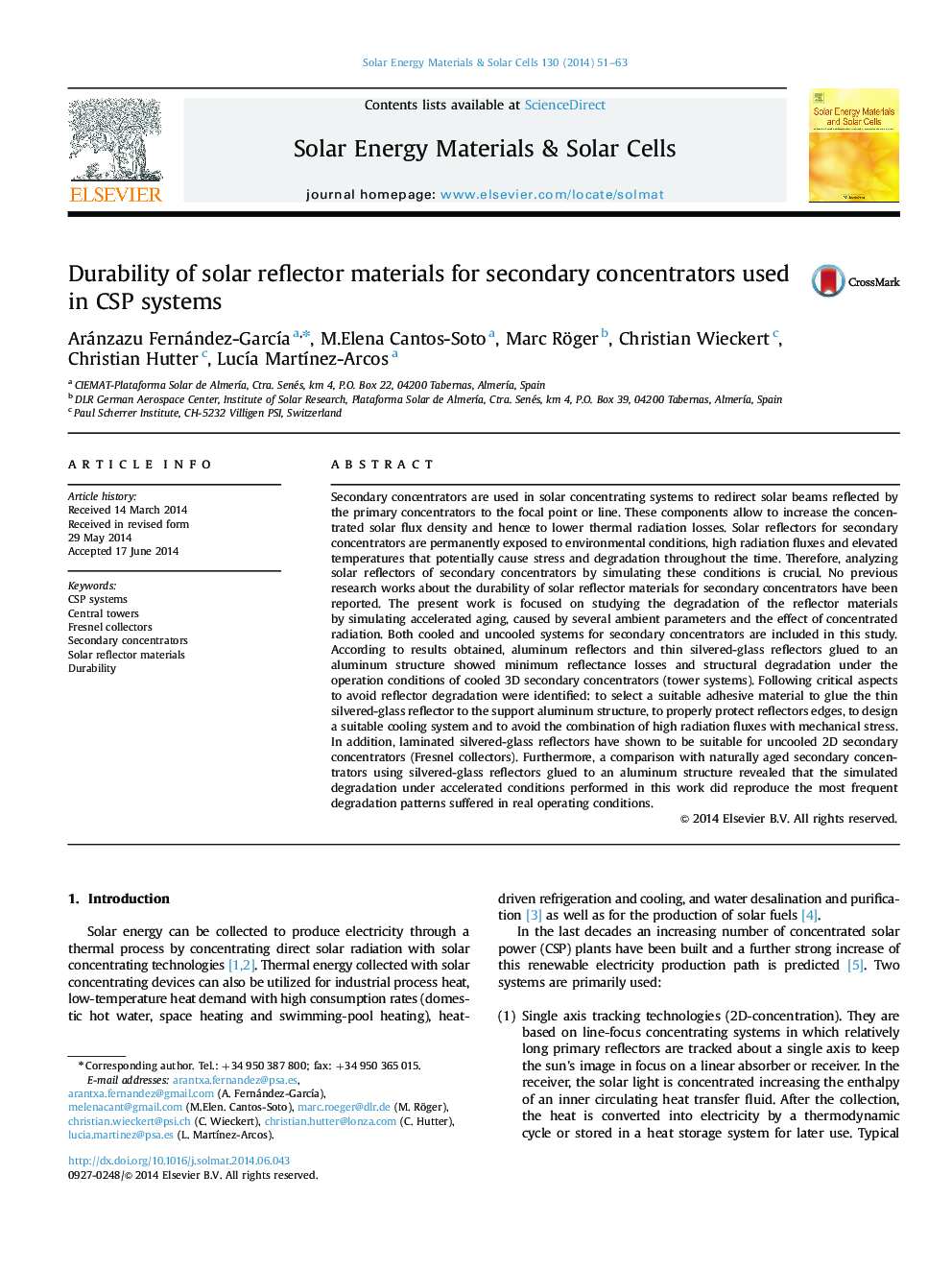| Article ID | Journal | Published Year | Pages | File Type |
|---|---|---|---|---|
| 6535511 | Solar Energy Materials and Solar Cells | 2014 | 13 Pages |
Abstract
Secondary concentrators are used in solar concentrating systems to redirect solar beams reflected by the primary concentrators to the focal point or line. These components allow to increase the concentrated solar flux density and hence to lower thermal radiation losses. Solar reflectors for secondary concentrators are permanently exposed to environmental conditions, high radiation fluxes and elevated temperatures that potentially cause stress and degradation throughout the time. Therefore, analyzing solar reflectors of secondary concentrators by simulating these conditions is crucial. No previous research works about the durability of solar reflector materials for secondary concentrators have been reported. The present work is focused on studying the degradation of the reflector materials by simulating accelerated aging, caused by several ambient parameters and the effect of concentrated radiation. Both cooled and uncooled systems for secondary concentrators are included in this study. According to results obtained, aluminum reflectors and thin silvered-glass reflectors glued to an aluminum structure showed minimum reflectance losses and structural degradation under the operation conditions of cooled 3D secondary concentrators (tower systems). Following critical aspects to avoid reflector degradation were identified: to select a suitable adhesive material to glue the thin silvered-glass reflector to the support aluminum structure, to properly protect reflectors edges, to design a suitable cooling system and to avoid the combination of high radiation fluxes with mechanical stress. In addition, laminated silvered-glass reflectors have shown to be suitable for uncooled 2D secondary concentrators (Fresnel collectors). Furthermore, a comparison with naturally aged secondary concentrators using silvered-glass reflectors glued to an aluminum structure revealed that the simulated degradation under accelerated conditions performed in this work did reproduce the most frequent degradation patterns suffered in real operating conditions.
Keywords
Related Topics
Physical Sciences and Engineering
Chemical Engineering
Catalysis
Authors
Aránzazu Fernández-GarcÃa, M.Elena Cantos-Soto, Marc Röger, Christian Wieckert, Christian Hutter, LucÃa MartÃnez-Arcos,
